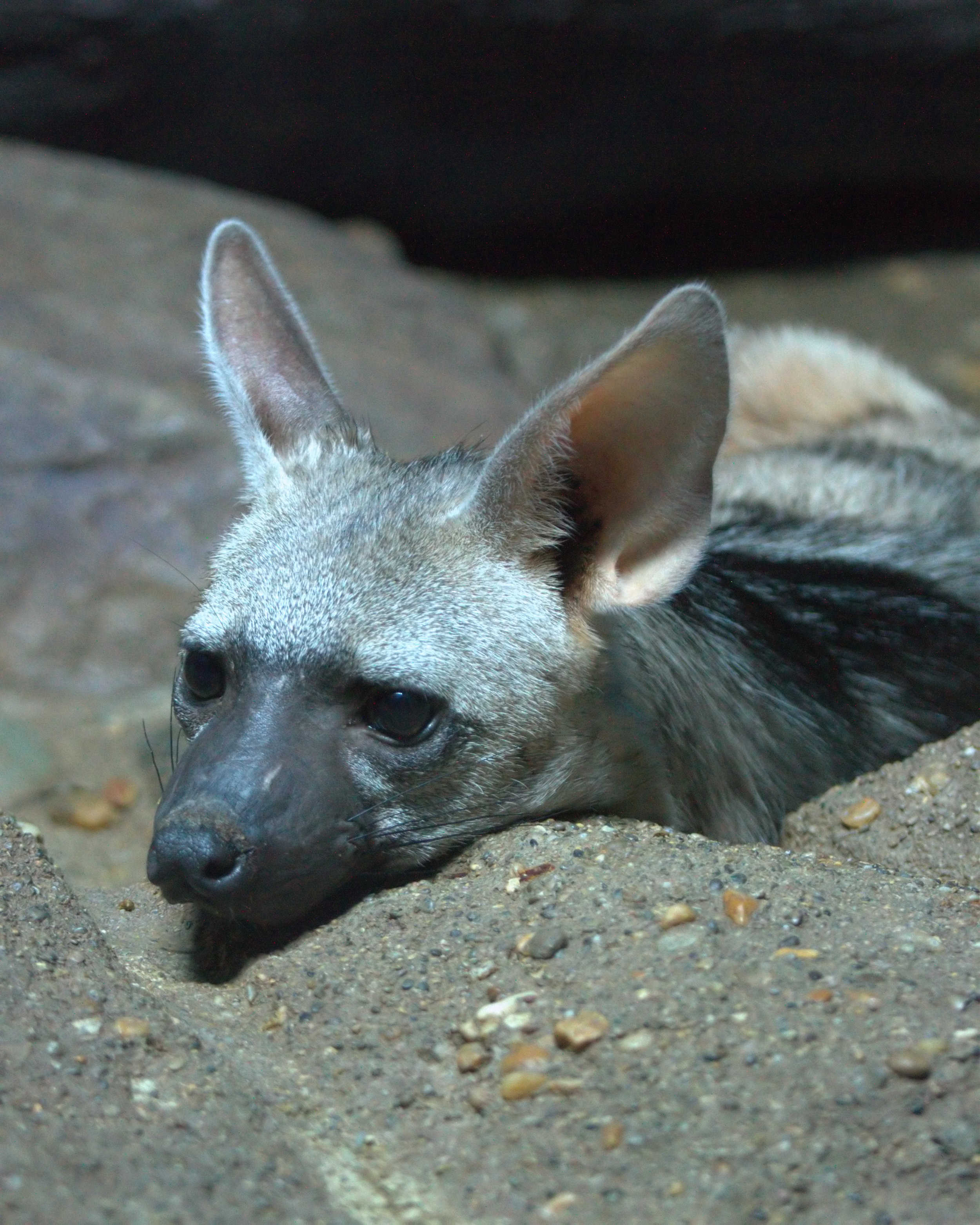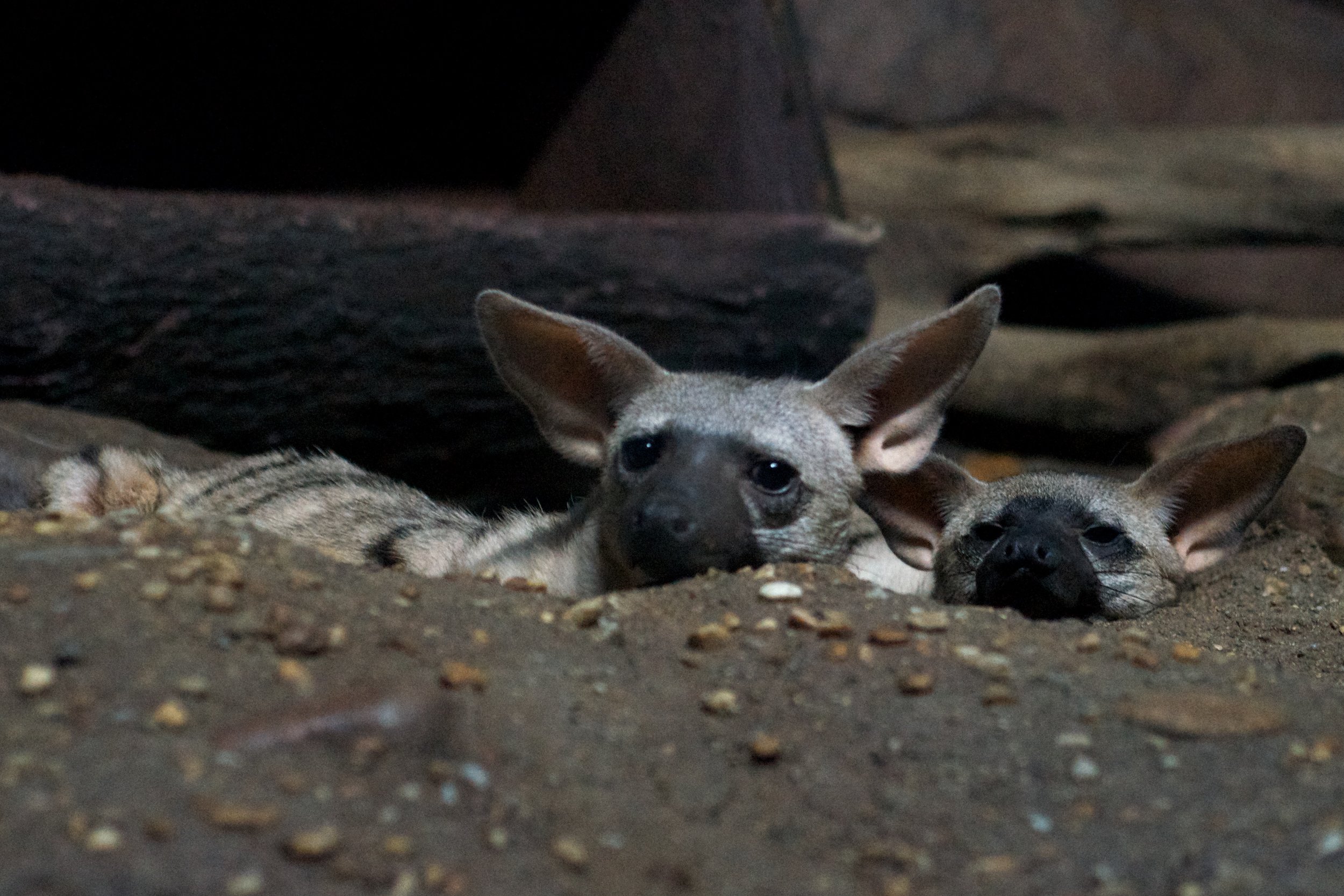The Creature Feature: 10 Fun Facts About the Aardwolf
The aardwolf (Proteles cristata) is not related to aardvarks or wolves — it's the smallest member of the hyena family. They have long, pointed ears, slender skulls, and long necks. Like all members of Hyaenidae, the have front legs longer than their hind legs, giving them a sloped stature. Aardwolves also have a distinctive mane that grows from behind their heads to the tips of their tails and black stripes running across their cream-colored bodies.Aardwolves can grow up to 31 inches in body length, with a 12 inch tail. They usually weigh less than thirty pounds. They live in the dry plains and bushland areas of southern and eastern Africa.
1. Aardwolves are related to hyenas. Unlike its name suggests, the aardwolf is not related to the aardvark. It's actually a member of the hyena family.
2. "Aardwolf" means "earth wolf" in Afrikaans. Aarwolves are also known as civet hyenas, for the secretions from their anal glands, and maanhaar jackals. Their genus name, Proteles, means "complete in front" and refers to the fact that they have five toes on their front paws and four toes on their back paws. Their species name, cristatus, means "provided with a comb," in reference to their manes.
3. They eat mostly termites. Unlike other termite-feeding animals, like the anteater and the aardvark, the aardwolf doesn't dig up its prey. It lacks the claws needed for digging. Instead, it laps up termites from the ground using its long, sticky tongue. One aardwolf can consume more than 200,000 termites in a single night. Contrary to popular belief, aardwolves don't eat carrion. They are often observed picking at corpses, but they are actually eating the insect larvae and beetles that are found on decaying bodies.
4. Aardwolves have specialized cheek teeth. They have strong jaws and canine teeth, but their cheek teeth have been reduced to flattened pegs, used for eating insects. Aardwolves primarily use their canines for fighting and defense.
5. They spend their days underground. Aardwolves are nocturnal and spend their days in underground burrows. They usually use the abandoned dens of aardvarks, porcupines, or springhares.
6. Aardwolves are territorial. A mating pair of aardwolves has a home range of up to four square km. Both sexes mark their territories with secretions from their anal glands.
7. Aardwolves use their manes to appear bigger. If another aardwolf intrudes upon their territory, they will raise their manes as a warning signal and chase the intruder away. If the intruder is caught, which happens rarely, a fight will occur.
8. They communicate largely through smell. Aardwolves have two anal glands that secrete a black, musky fluid that they use to mark their territories and send messages to other aardwolves. They smear these secretions on foliage to establish territories and attract potential mates. They tend to be vocal only when confronting intruders or predators. In these cases, aardwolves may make a clucking sound, a deep growl, or a roar.
9. They have special toilet areas. Aardwolves have areas within their territories that they use for urination and defecation, called middens. Each time they visit a midden, they dig a hole, do their business, and then pile dirt on top to cover it up.
10. Aardwolves are socially monogamous. They form mating pairs and help raise their young together, but males may mate with other females within neighboring territories. Males and females care for their offspring together for about their first year. When pups are small, the males guard the den while the female leaves to forage for food.
References and Other Resources:
Aardwolf (Proteles cristata). Arkive. Accessed August 18, 2015 at http://www.arkive.org/aardwolf/proteles-cristata/.
Aardwolf (Proteles cristata). IUCN Hyaena Specialist Group. Accessed August 18, 2015 at http://www.hyaenidae.org/the-hyaenidae/aardwolf-proteles-cristatus.html.Matsebula, S. N., Monadjem, A., Roques, K. G., and Garcelon, D. K. (2009).
The diet of the aardwolf, Proteles cristatus, at Malolotja Nature Reserve, western Swaziland. African Journal of Ecology 47: 448-451. doi: 10.1111/j.1365-2028.2008.00982.x.Nel, J. A. J. and Bothma, J. (1983).
Scent marking and midden used by aardwolves (Proteles cristatus) in the Namib Desert. African Journal of Ecology, 21: 25-39. doi: 10.1111/j.1365-2028.1983.tb00310.x.Proteles cristata. Encyclopedia of Life. Accessed August 18, 2015 at http://eol.org/pages/925982/details.Sliwa, A. and Richardson, P. R. K. (1998).
Responses of aardwolves, Proteles cristatus, Sparrman 1783, to translocated scent marks. Animal Behaviour 56: 137-146. doi: 10.1006/anbe.1998.0757.Stump, M. (2011). Proteles cristata. Animal Diversity Web. Accessed August 18, 2015 at http://animaldiversity.org/accounts/Proteles_cristata/.





